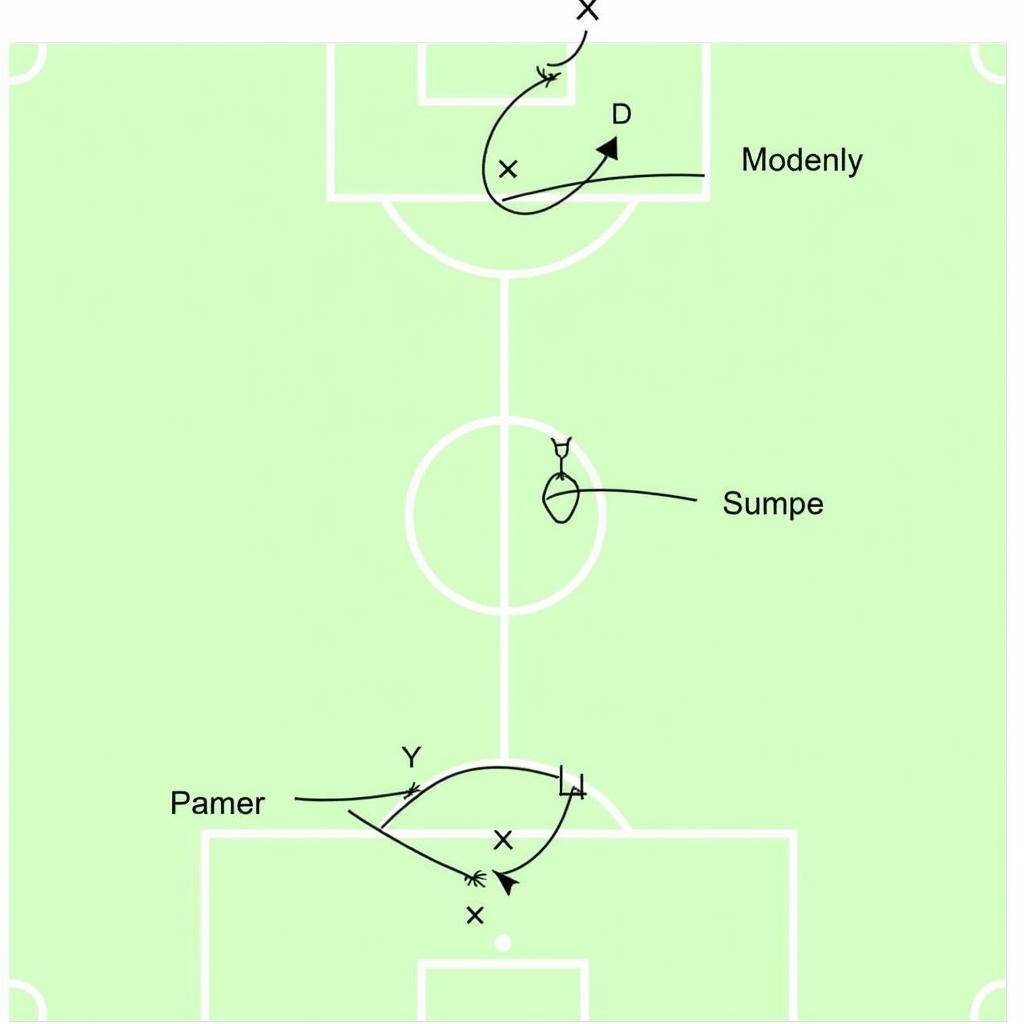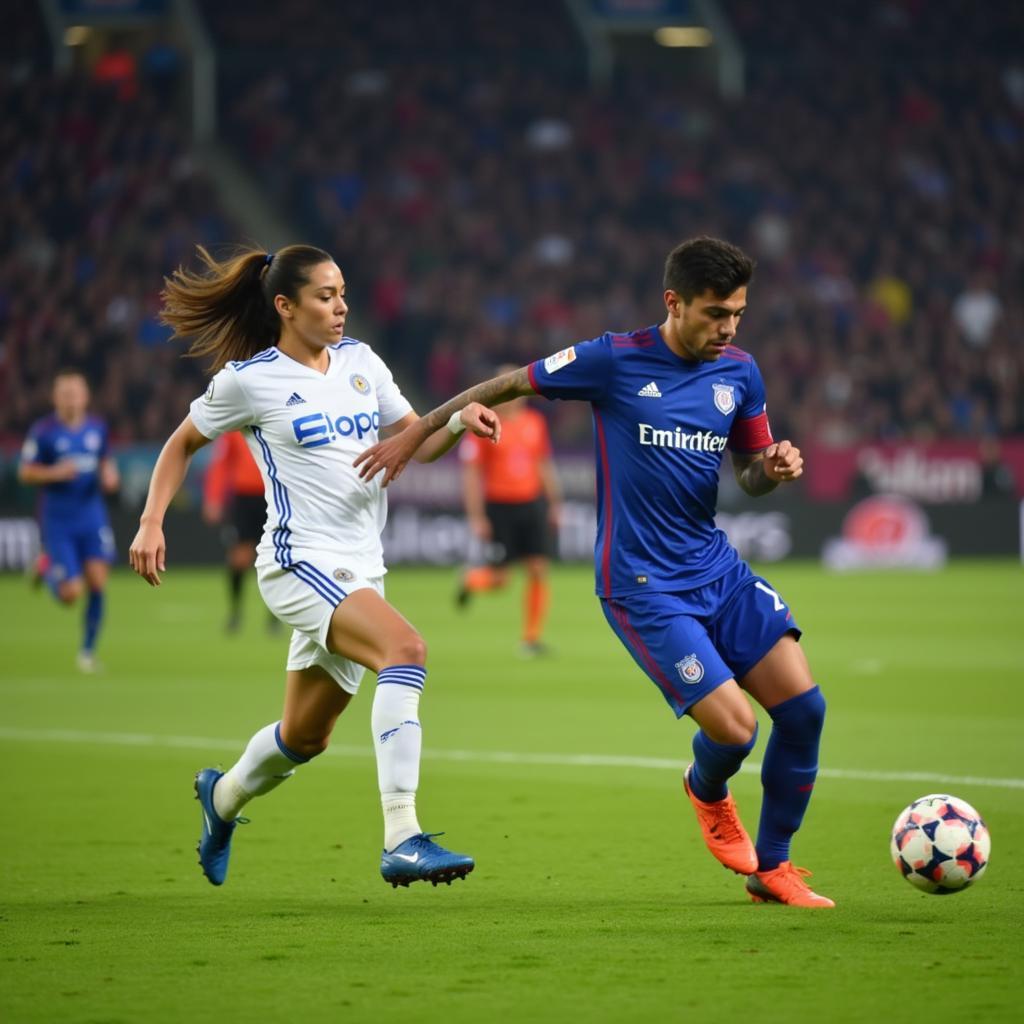Understanding the Role of a Satellite Player in Football
October 13, 2024A satellite player in football might not be the star striker grabbing all the headlines, but their importance to a team’s success shouldn’t be underestimated. They orbit around the key players, creating space and opportunities that can make all the difference in a tightly contested match. So, what exactly defines a satellite player, and how do they contribute to a winning formula?
Decoding the Satellite Player: More Than Just a Supporting Role
In essence, a satellite player excels in playing around the “main attraction” on the pitch. This focal point could be a prolific goal scorer, a creative playmaker, or even a dominant midfield maestro. Think of it like a solar system: the star possesses the gravitational pull, while the planets (our satellite players) rotate around it, influenced by its presence.
 Satellite Player Positioning
Satellite Player Positioning
However, simply being in proximity to the star player isn’t enough. A true satellite player possesses specific attributes and understands their role within the team’s tactical framework. Let’s delve into some key characteristics:
1. Intelligent Movement and Spatial Awareness:
Satellite players are masters of finding space. They read the game exceptionally well, anticipating the movements of both teammates and opponents. This awareness allows them to drift into pockets of space, often unmarked, ready to receive a pass and exploit defensive vulnerabilities.
2. Technical Proficiency and Quick Decision-Making:
Once they receive the ball, time is of the essence. Satellite players need to be technically sound, able to control the ball cleanly and make quick, decisive passes or take on defenders in tight spaces. Their decision-making under pressure is often what separates them from average players.
3. Versatility and Adaptability:
A satellite player might be deployed in various positions depending on the team’s formation and tactical approach. They might operate on the wings, in attacking midfield, or even as a second striker. Their adaptability allows them to slot into different roles while maintaining their core responsibilities.
The Impact of a Satellite Player: Unsung Heroes of the Beautiful Game
While their contributions might not always be reflected in goals and assists, the impact of a satellite player is undeniable:
1. Creating Space for Star Players:
By drawing defenders away from the key playmaker, satellite players create valuable space and time for them to operate. This can be achieved through well-timed runs, creating passing lanes, and forcing defensive adjustments.
2. Unpredictability and Offensive Fluidity:
Satellite players introduce an element of unpredictability to the attack. Their off-the-ball movement makes it difficult for defenders to track, disrupting defensive structures and creating opportunities for themselves and their teammates.
 Satellite Player Creating Space
Satellite Player Creating Space
3. Tactical Flexibility and System Players:
Their ability to adapt to different roles and tactical instructions makes them valuable assets for managers. They are often the glue that holds the team’s shape and facilitates transitions between defense and attack.
Recognizing the Value: Beyond the Statistics
It’s easy to get caught up in goals and assists when evaluating a player’s worth. However, the true impact of a satellite player often goes beyond traditional statistics. Their intelligent movement, tactical awareness, and ability to create opportunities for others are crucial elements in a team’s success.
So, the next time you watch a football match, pay attention to the players who might not be hogging the limelight. Observe their movement off the ball, their understanding of space, and their ability to link up play. You’ll likely discover the unsung heroes, the satellite players, who contribute significantly to the beautiful game.
FAQ:
1. Are satellite players only found in attacking positions?
While more common in attacking areas, the concept of a satellite player can apply to other positions as well. A full-back making overlapping runs to support the winger, or a central midfielder creating space for a more attack-minded teammate can also be considered satellite players in their own right.
2. Can a player be both a star and a satellite player?
Absolutely! Some of the most complete footballers can seamlessly transition between roles depending on the game situation. They can be the focal point of the attack one moment, then drop back and create space for a teammate the next.
3. How can I train to become a better satellite player?
Developing tactical awareness, improving off-the-ball movement, and honing technical skills are essential. Watch and analyze professional games, focusing on the movement of intelligent players. Practice your passing and receiving under pressure, and work on your fitness to maintain sharp movement throughout the match.
Need More Football Insights?
Looking for more in-depth analysis, training tips, and exclusive content? Contact us at:
Phone: 0396443476
Email: [email protected]
Address: 23 Tháng 3, Đắk Nia, Gia Nghĩa, Đắk Nông, Việt Nam
Our dedicated team is available 24/7 to answer your questions and fuel your passion for the beautiful game.